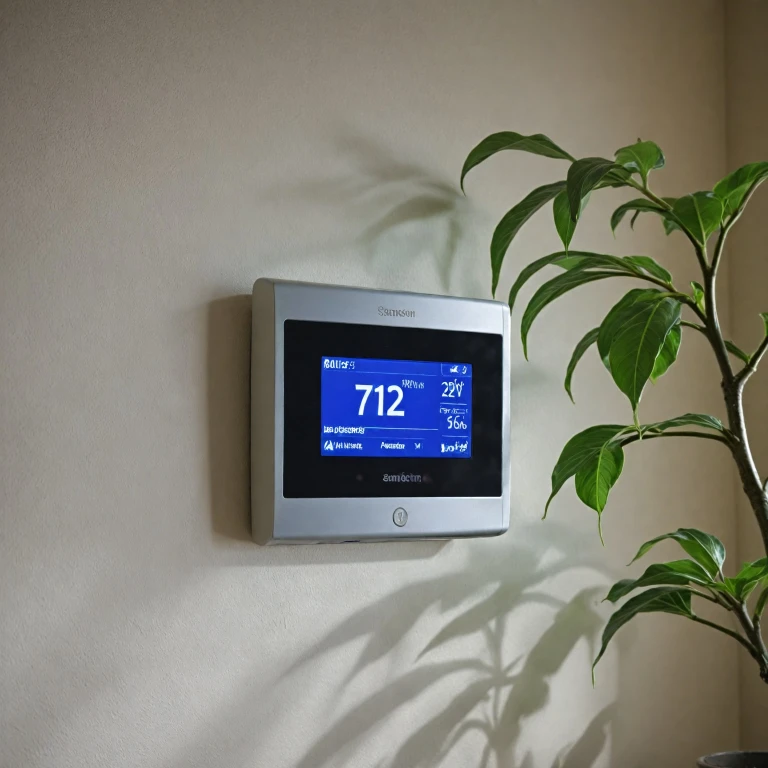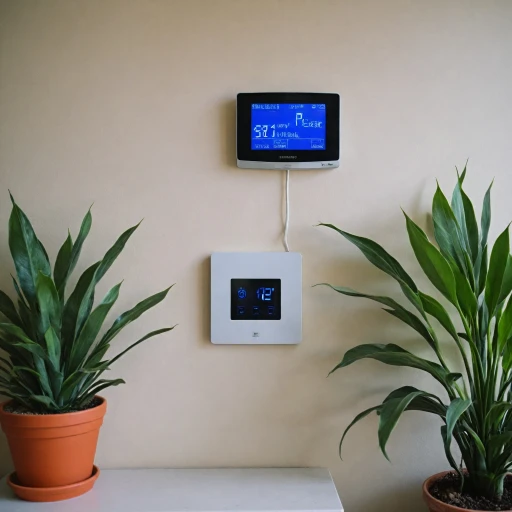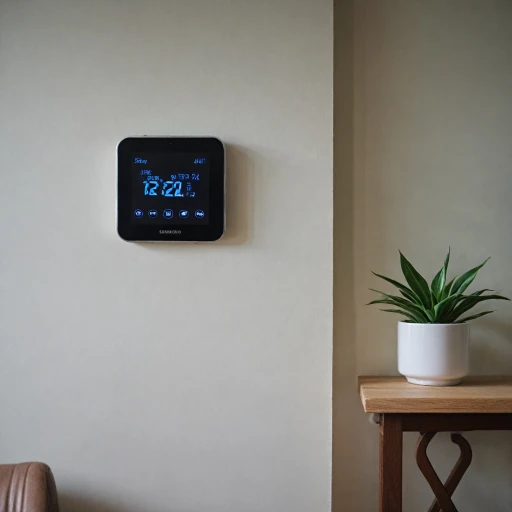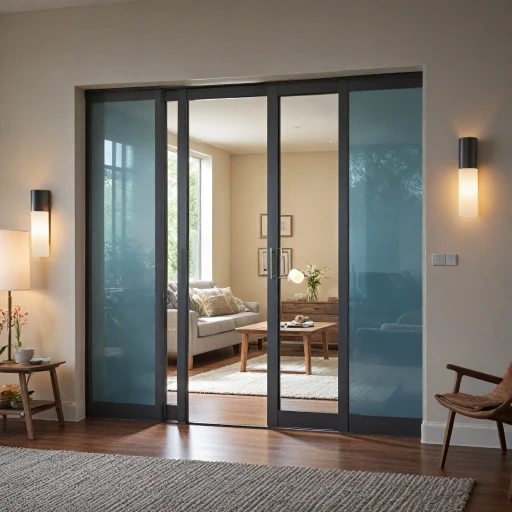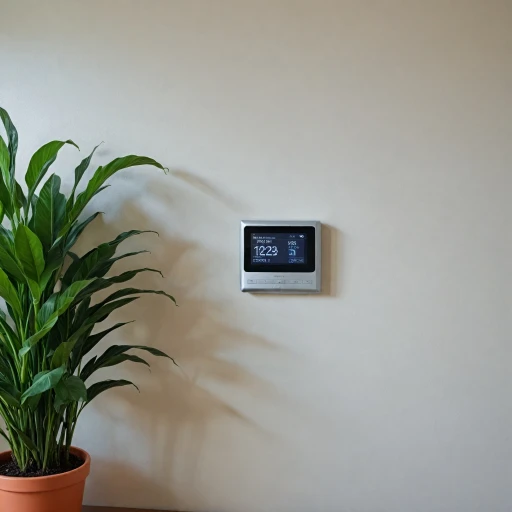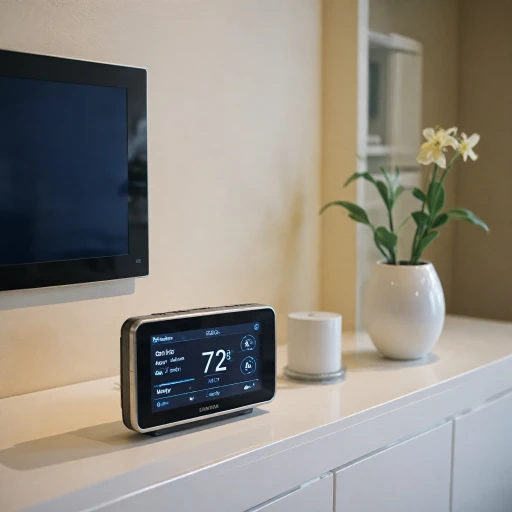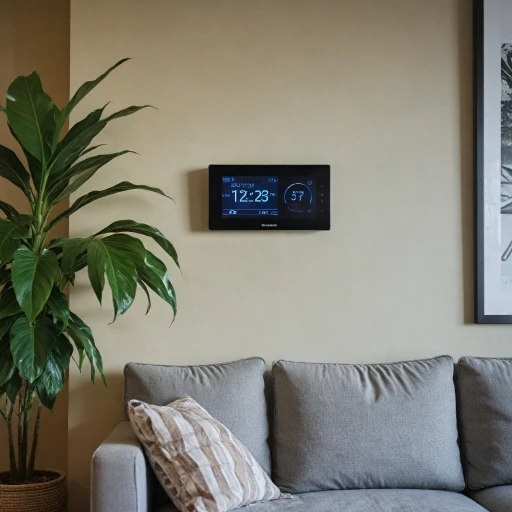
The Role of Wi-Fi Thermostats in Modern Homes
Enhancing Lifestyle with Intelligent Temperature Control
Smart thermostats have become a cornerstone in creating energy-efficient and comfortable modern homes. By intelligently managing home heating and cooling systems, these devices offer more than just temperature control; they fundamentally transform how we interact with our living environments. Unlike standard programmable thermostats, they offer a seamless blend of convenience and technological innovation. Factors such as heating, cooling, and energy usage are efficiently managed by smart systems like the widely recognized Nest thermostat. These products make it simpler to manage room temperature across various parts of a home, while also tailoring energy consumption to suit daily routines. This ensures that energy is used efficiently, reducing unnecessary waste and ultimately leading to significant energy savings. A crucial feature propelling this technology forward is its ability to integrate beyond basic heat pump management with third-party solutions and compatibility with HVAC systems. This integration helps in achieving precise temperature control, which is essential for optimizing comfort while minimizing energy consumption. Beyond tangible benefits, smart thermostats with Wi-Fi capabilities grant remote access and advanced control with wire adapters. Homeowners can change settings from anywhere at any time and monitor energy usage remotely, ensuring their next energy bill doesn’t come as a surprise. For those concerned with data privacy, companies adhere to strict privacy policies, safeguarding user data. Investing in a smart device like the learning thermostat involves considerations such as ensuring compatibility with your current HVAC system, understanding the complexity of the control board, and opting for a product that aligns with your energy-saving goals. Ultimately, smart thermostats serve as the linchpin for a smarter, more energy-conscious household. For additional details on how intelligent temperature control solutions can benefit your home, consider exploring our smart thermostat solution.Key Components of a Wi-Fi Thermostat
The Core Elements of Wi-Fi Thermostats
Smart thermostats have transformed the way we manage our home environments, and understanding their components is vital for anyone considering their installation. These devices are more than just a fancy upgrade; they are designed to maximize energy usage and convenience.- Thermostat Display and Interface: The most visible part, the display, often features touch controls or buttons, providing users with an interactive way to see and change temperature settings, set schedules, and manage modes. Some models, like the Nest thermostat, also offer user-friendly interfaces that learn your preferences over time.
- Control Board: Acting as the brain of the device, the control board manages communication between the thermostat and the HVAC system. It processes information and commands every part of the system, ensuring accurate temperature control.
- Temperature Sensors: These sensors monitor room temperature and relay this information to the control board, allowing the system to adjust heating or cooling to meet the desired settings efficiently. This integration promotes energy savings by preventing overuse of systems.
- Wi-Fi Connectivity: A defining feature of Wi-Fi thermostats, connectivity allows users the flexibility of remote access through apps. This feature is indispensable for anyone interested in real-time control of their home's temperatures from anywhere, even adapting to change in plans or unexpected returns home.
- Programmable Features: Modern smart thermostats come with robust programmable settings, enabling users to create schedules that align with their lifestyle. This functionality not only contributes to convenience but also supports energy savings by preventing unnecessary energy consumption.
- Wire Compartment: This section houses necessary wiring, like power and communication wires. For homes without a common wire, wire adapters may be required to connect the thermostat to the HVAC system.
- Integration with Other Devices: Many thermostats support third-party device integration, such as smart home systems and voice control systems, allowing for seamless control alongside other smart devices.
How Wi-Fi Connectivity Enhances Thermostat Functionality
The Benefits of Wi-Fi Connectivity in Smart Thermostats
Wi-Fi connectivity elevates the functionality of smart thermostats, offering a seamless integration of smart technologies within modern homes. This connectivity allows users to gain remote access to their HVAC systems, enabling more precise control over heating and air conditioning. Smart thermostats utilize Wi-Fi to provide:- Remote Access and Control: With Wi-Fi capabilities, users can adjust their room temperature settings from anywhere, whether they are at home, at the office, or on the go. This flexibility ensures optimal comfort and reduces unnecessary energy usage.
- Integration with Other Smart Products: Wi-Fi enables smart thermostats to communicate with other smart devices, enhancing overall home automation. Products like Nest Thermostat support this feature, synchronizing with other systems to deliver cohesive smart home experiences.
- Programmable Temperature Settings: Advanced scheduling becomes feasible with Wi-Fi thermostats, allowing users to create customized programs according to their daily routines. Programmable thermostat features are critical for balancing comfort with energy savings.
- Data and Insights for Improved Efficiency: Through connectivity, users gain access to detailed reports on their energy consumption. This information can lead to actionable insights for enhancing energy efficiency and informing device usage.
Energy Efficiency and Cost Savings with Wi-Fi Thermostats
Maximizing Savings: The Smart Path to Energy Efficiency
Smart thermostats have revolutionized how energy is managed in residential settings, offering substantial cost savings and enhancing overall energy efficiency. By gaining unprecedented control over your hvac system, these products empower consumers to optimize temperature settings based on real-time needs rather than static schedules. The key lies in their ability to not only maintain comfortable room temperature but also intelligently adjust it based on a variety of factors such as time of day and occupancy. Many smart thermostats come equipped with programmable settings that allow users to schedule heating and cooling periods around their lifestyles, avoiding needless energy consumption when nobody is home. For example, a learning thermostat like the Nest learns your habits over time and adjusts the system to maintain efficiency without compromising comfort. This adaptive feature can significantly reduce energy usage and lower utility bills, offering a return on investment typically within a few years of use. Notably, the integration of Wi-Fi connectivity in these systems facilitates a higher level of control and flexibility. Users can remotely access their thermostats via smartphones or other connected devices, allowing them to make real-time temperature changes from any location. This feature supports both immediate adjustments and long-term energy savings strategies, fostering an environment where heating and cooling efforts reflect actual needs rather than assumptions. Additionally, modern smart thermostats often include advanced data analytics. By collecting and analyzing data regarding your home's energy consumption patterns, these systems provide actionable insights into areas where further energy savings might be achieved. Importantly, access to this information is usually protected by strict privacy policies ensuring that user data remains secure. On the hardware side, components like the control board and wire adapter ensure reliable operation and integration with existing HVAC systems and heat pumps. This seamless connectivity is crucial for realizing the full range of energy-saving benefits without having to replace significant parts of your existing setup. In conclusion, investing in a smart thermostat not only underscores a commitment to sustainable living but also promises tangible reductions in energy costs. Whether your priority is saving energy now or maintaining a future-proof home that adapts to evolving technologies, these smart products present an opportunity to manage your environment more effectively.Challenges and Considerations in Choosing a Wi-Fi Thermostat
Considerations Before Making a Choice
When deciding on a Wi-Fi thermostat, there are several factors that homeowners need to take into account to ensure an optimal setup for their heating and cooling needs.- Compatibility with Your HVAC System: Before purchasing a smart thermostat, it's vital to check whether it is compatible with your existing HVAC system. Not all thermostats work with every heating, cooling, or heat pump setup. Ensure that the thermostat you choose can integrate seamlessly.
- Wiring Requirements: Some smart thermostats may require a wire adapter or additional wiring to function correctly. It is essential to review your current setup, identify necessary changes, and consider whether professional installation might be needed. This will enhance the control of your heating and cooling systems.
- Privacy Concerns: With the advent of smart technology, privacy is a significant concern. Users should review the privacy policy of the product to understand what data is collected and how it is used by the manufacturer.
- Ease of Use and Accessibility: Many users prioritize ease of use in programmable thermostats. Ensure that the thermostat offers intuitive controls, either through a physical control board, an app, or voice commands, to help manage room temperatures efficiently. Remote access is a bonus for some, allowing users to change settings from anywhere at any time.
- Third-Party Integration: Some Wi-Fi thermostats, like the Nest thermostat, offer integration with other smart home products and ecosystems. Assess whether seamless integration with existing smart devices is a priority.
- Budget Considerations: Lastly, consider the budget. While it's tempting to opt for the most advanced model, a more affordable, programmable thermostat might suffice, especially if energy savings and reduced energy consumption are the primary goals.
Future Trends in Wi-Fi Thermostat Technology
Emerging Technologies and Innovations
The world of smart thermostats is rapidly evolving, with new technologies and innovations continually enhancing their capabilities. One of the most exciting developments is the integration of artificial intelligence, which allows thermostats to learn from user behavior and adjust heating and cooling patterns accordingly. This learning capability not only optimizes energy consumption but also enhances user comfort by maintaining ideal room temperature settings.
Interoperability and Integration
As smart homes become more common, the demand for devices that can seamlessly integrate with other smart systems is increasing. Future smart thermostats are expected to offer greater interoperability, allowing them to work in harmony with other smart home devices such as lighting systems, security cameras, and voice assistants. This integration will provide users with a more cohesive and efficient home automation experience.
Enhanced Energy Management
Energy efficiency remains a top priority for smart thermostat manufacturers. Future models will likely offer more advanced energy management features, enabling users to monitor and control their energy usage in real-time. These features will help users achieve significant energy savings by providing insights into their energy consumption patterns and suggesting ways to reduce energy usage.
Improved User Interfaces
As technology advances, the user interfaces of smart thermostats are becoming more intuitive and user-friendly. Future thermostats will likely feature enhanced touchscreens and voice control options, making it easier for users to program and adjust their systems. This focus on user experience will ensure that even those who are not tech-savvy can benefit from the advantages of a smart thermostat.
Privacy and Security Considerations
With the increasing connectivity of smart thermostats, privacy and security have become critical concerns. Future products will need to address these issues by implementing robust security measures to protect user data and ensure that unauthorized access is prevented. Manufacturers are expected to prioritize the development of secure systems that comply with stringent privacy policies.
